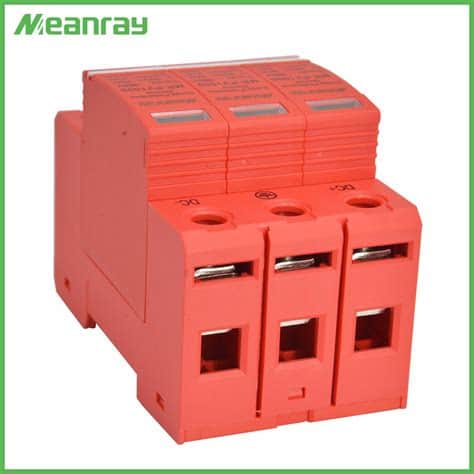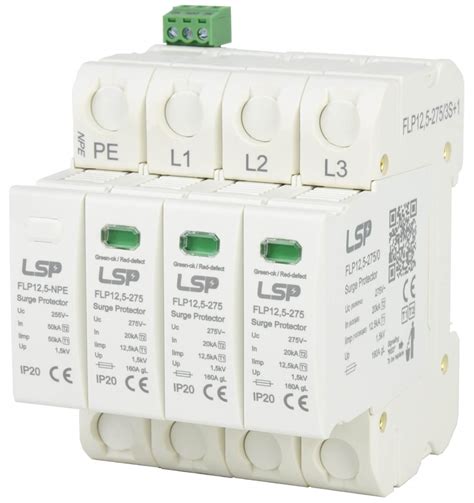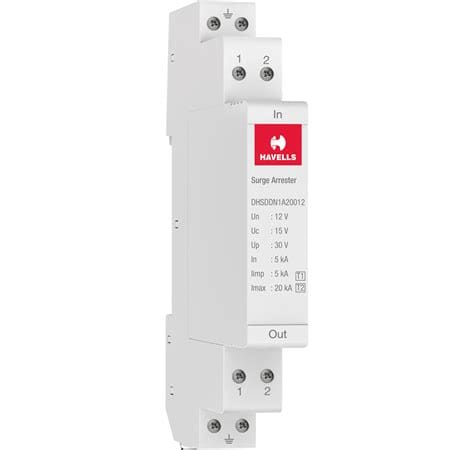Introduction to Surge Protection
Surge protection is a crucial aspect of safeguarding electronic devices, including printed circuit boards (PCBs), from sudden spikes in voltage or current. These surges can be caused by various factors, such as lightning strikes, power outages, or electrical noise from nearby equipment. Without proper surge protection, PCBs can suffer severe damage, leading to costly repairs or even complete failure.
In this article, we will explore the two main types of surge protection: internal and external. We will discuss their advantages, disadvantages, and how they can be used together to provide comprehensive protection for PCBs.
Understanding Surges and Their Impact on PCBs
What is a Surge?
A surge is a sudden, short-duration increase in voltage or current that exceeds the normal operating levels of an electrical system. Surges can be categorized into two main types:
-
Transient surges: These are brief, high-voltage spikes that can last for a few microseconds to a few milliseconds. Transient surges are often caused by lightning strikes or switching events in the power grid.
-
Sustained surges: These are longer-duration increases in voltage that can last for several cycles of the AC power waveform. Sustained surges are typically caused by faults in the power distribution system or by the sudden disconnection of large loads.
How Surges Affect PCBs
PCBs are highly sensitive to surges, as they contain delicate electronic components that can be easily damaged by excessive voltage or current. Some of the common effects of surges on PCBs include:
-
Component failure: Surges can cause immediate failure of components such as integrated circuits, transistors, and capacitors.
-
Insulation breakdown: High-voltage surges can break down the insulation between conductors on a PCB, leading to short circuits and arcing.
-
Gradual degradation: Even if a surge does not cause immediate failure, it can still weaken components over time, reducing their lifespan and reliability.

External Surge Protection
External surge protection devices (SPDs) are installed outside of the PCB, typically at the point where power enters the system. These devices are designed to divert excess energy away from the protected equipment and into a safe discharge path, such as a ground wire.
Types of External SPDs
-
Metal Oxide Varistors (MOVs): MOVs are the most common type of external SPD. They are voltage-dependent resistors that offer low resistance at high voltages, allowing them to quickly divert surge energy away from the protected equipment.
-
Gas Discharge Tubes (GDTs): GDTs are sealed glass or ceramic tubes filled with a special gas mixture. When a surge occurs, the gas ionizes and creates a low-resistance path for the excess energy to flow through.
-
Silicon Avalanche Diodes (SADs): SADs are semiconductor devices that can handle large surge currents while maintaining a fast response time. They are often used in conjunction with MOVs or GDTs to provide a multi-stage protection scheme.
Advantages of External SPDs
-
High energy handling capability: External SPDs can typically handle much larger surge energies than internal protection devices, making them suitable for protecting against severe surges such as lightning strikes.
-
Easy to replace: If an external SPD fails due to a large surge event, it can be easily replaced without having to modify the PCB itself.
-
Isolation from the PCB: External SPDs provide a physical barrier between the surge and the PCB, reducing the risk of damage to sensitive components.
Disadvantages of External SPDs
-
Added cost and space: Incorporating external SPDs into a system requires additional components and PCB real estate, which can increase the overall cost and size of the design.
-
Limited protection for inter-board surges: External SPDs are most effective at protecting against surges that originate outside the system. They may not provide adequate protection against surges that occur between different PCBs within the same system.

Internal Surge Protection
Internal surge protection involves incorporating protection devices directly onto the PCB itself. These devices are typically smaller and more closely integrated with the circuitry they are protecting.
Types of Internal SPDs
-
Transient Voltage Suppressor (TVS) Diodes: TVS diodes are semiconductor devices that can clamp voltage spikes to a safe level within nanoseconds. They are available in various voltage ratings and package sizes, making them suitable for a wide range of PCB applications.
-
Multilayer Varistors (MLVs): MLVs are surface-mount devices that function similarly to MOVs but are designed for PCB mounting. They offer fast response times and can handle moderate surge energies.
-
Polymer-based Suppressors: These devices use a polymer material with non-linear electrical properties to provide surge protection. They offer low capacitance and fast response times, making them suitable for high-speed data lines.
Advantages of Internal SPDs
-
Compact size: Internal SPDs are typically much smaller than external devices, allowing for better integration into the PCB layout.
-
Fast response time: Because internal SPDs are located closer to the components they are protecting, they can respond more quickly to surges, providing better protection against fast transients.
-
Lower cost: In many cases, internal SPDs can be more cost-effective than external devices, especially for smaller systems or those with multiple PCBs.
Disadvantages of Internal SPDs
-
Limited energy handling capability: Internal SPDs generally have lower energy handling capabilities compared to external devices, making them less suitable for protecting against severe surges.
-
Difficult to replace: If an internal SPD fails, it may require rework or replacement of the entire PCB, which can be time-consuming and costly.
-
Potential for interference: Some internal SPDs, such as TVS diodes, can introduce capacitance into the circuit, which may affect high-frequency signal integrity.

Combining Internal and External Surge Protection
For optimal PCB protection, it is often recommended to use a combination of internal and external surge protection devices. This approach, known as a multi-stage protection scheme, provides a layered defense against surges of varying magnitudes and durations.
Benefits of a Multi-stage Protection Scheme
-
Comprehensive coverage: By using both internal and external SPDs, a multi-stage protection scheme can effectively handle surges originating from outside the system as well as those occurring between PCBs.
-
Improved energy distribution: External SPDs can handle the bulk of the surge energy, while internal devices provide localized protection for sensitive components. This distribution of energy helps to prevent any single device from being overwhelmed.
-
Enhanced reliability: If one stage of protection fails, the other stages can still provide a degree of protection, increasing the overall reliability of the system.
Implementing a Multi-stage Protection Scheme
When designing a multi-stage protection scheme, consider the following guidelines:
-
Select appropriate SPDs: Choose external and internal SPDs with voltage ratings and energy handling capabilities that match the expected surge levels in your application.
-
Coordinate protection levels: Ensure that the clamping voltages of the internal SPDs are lower than those of the external devices. This coordination helps to prevent the internal devices from being subjected to excessive voltages.
-
Minimize lead lengths: Keep the connections between the SPDs and the protected circuitry as short as possible to reduce the effects of parasitic inductance and improve the response time of the protection devices.
-
Consider signal integrity: When selecting internal SPDs for high-speed data lines, choose devices with low capacitance to minimize the impact on signal quality.
Case Studies
To illustrate the effectiveness of surge protection in real-world applications, let’s examine two case studies.
Case Study 1: Telecom Equipment
A telecom equipment manufacturer was experiencing frequent failures of their PCBs due to lightning-induced surges. The company implemented a multi-stage protection scheme consisting of external GDTs and internal TVS diodes. The results were as follows:
| Metric | Before Protection | After Protection |
|---|---|---|
| PCB failure rate | 12% | 1.5% |
| Average repair cost | $1,500 | $300 |
| Estimated annual savings | – | $90,000 |
By implementing a comprehensive surge protection solution, the company was able to significantly reduce PCB failures and associated repair costs, resulting in substantial annual savings.
Case Study 2: Industrial Control System
An industrial control system manufacturer was facing issues with PCB reliability due to surges caused by switching large inductive loads. They implemented a combination of external MOVs and internal MLVs to mitigate the problem. The results were as follows:
| Metric | Before Protection | After Protection |
|---|---|---|
| PCB failure rate | 8% | 0.5% |
| Average downtime per failure | 4 hours | 1 hour |
| Estimated annual savings | – | $120,000 |
The surge protection solution not only reduced the PCB failure rate but also minimized the downtime associated with each failure, leading to significant annual savings for the company.
Frequently Asked Questions (FAQ)
-
Q: How do I choose the right surge protection devices for my PCB?
A: When selecting surge protection devices, consider factors such as the expected surge levels, the voltage and current ratings of the components you are protecting, and the space available on your PCB. Consult with surge protection device manufacturers or experienced engineers to help select the most appropriate devices for your application. -
Q: Can I use only internal surge protection devices for my PCB?
A: While internal surge protection devices can provide localized protection for sensitive components, they may not be sufficient to handle large, external surges. For best results, it is recommended to use a combination of internal and external devices to create a multi-stage protection scheme. -
Q: How often should I replace my surge protection devices?
A: The lifespan of surge protection devices depends on factors such as the frequency and magnitude of surges they are exposed to. Many devices are designed to fail in a safe, short-circuit mode when they have reached their maximum energy absorption capacity. It is important to regularly inspect your surge protection devices and replace them if they show signs of damage or degradation. -
Q: Can surge protection devices interfere with the normal operation of my PCB?
A: Some surge protection devices, particularly those with high capacitance, can affect the high-frequency performance of circuits. When selecting devices for high-speed data lines or sensitive analog circuits, choose low-capacitance options and place them carefully to minimize any potential signal integrity issues. -
Q: Are there any standards or guidelines for surge protection in PCB design?
A: Yes, there are several standards and guidelines that cover surge protection in electronic systems. Some notable examples include: - IEC 61000-4-5: Testing and measurement techniques – Surge immunity test
- IEEE C62.41.1: Guide on the Surge Environment in Low-Voltage (1000 V and Less) AC Power Circuits
- UL 1449: Standard for Surge Protective Devices
Consulting these standards can help ensure that your surge protection design meets industry best practices and requirements.
Conclusion
Surge protection is an essential aspect of ensuring the reliability and longevity of PCBs in various applications. By understanding the differences between internal and external surge protection devices, and how they can be used together in a multi-stage protection scheme, designers can create robust PCBs that can withstand the challenges posed by electrical surges.
When implementing surge protection, it is crucial to select appropriate devices, coordinate protection levels, minimize lead lengths, and consider signal integrity. By following these guidelines and consulting with experts in the field, PCB designers can effectively mitigate the risks associated with surges and create products that are both reliable and cost-effective.
As demonstrated by the case studies, implementing comprehensive surge protection solutions can lead to significant reductions in PCB failure rates, repair costs, and downtime. By investing in surge protection, companies can not only improve the quality and reliability of their products but also realize substantial financial benefits in the long run.

No responses yet